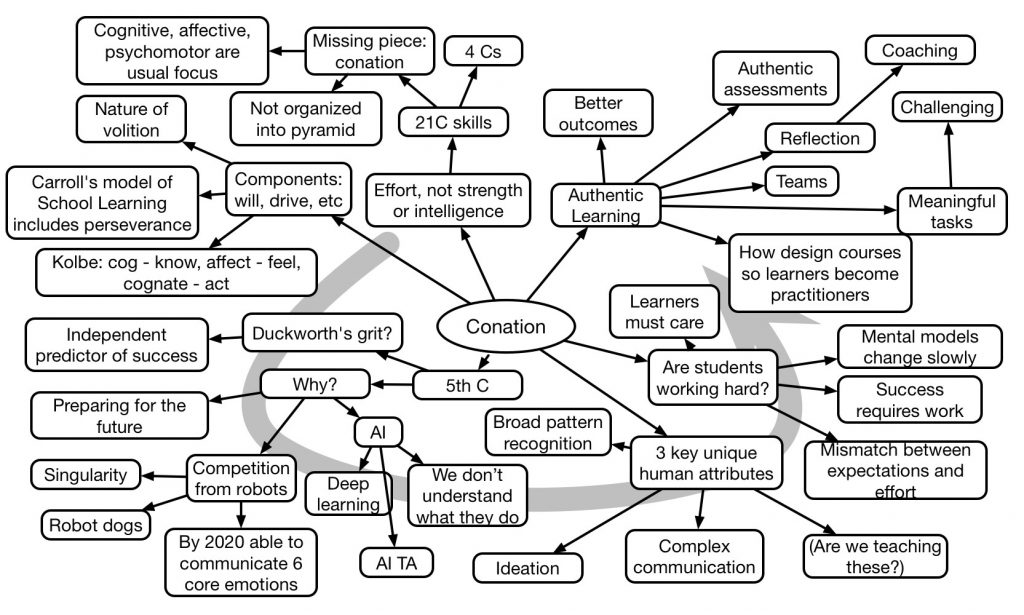So, at the recent AECT 2017 conference, I participated in three ways that are worth noting. I had the honor of participating in two sessions based upon writings I’d contributed, and one based upon my own cogitations. I thought I’d share the thinking.
For my own presentation, I shared my efforts to move ‘rapid elearning’ forward. I put Van Merrienboer’s 4 Component ID and Guy Wallace’s Lean ISD as a goal, but recognized the need for intermediate steps like Michael Allen’s SAM, David Merrill’s ‘Pebble in a Pond‘, and Cathy Moore’s Action Mapping. I suggested that these might be too far, and want steps that might be slight improvements on their existing processes. These included three thing: heuristics, tools, and collaboration. Here I was indicating specifics for each that could move from well-produced to well-designed.
In short, I suggest that while collaboration is good, many corporate situations want to minimize staff. Consequently, I suggest identifying those critical points where collaboration will be useful. Then, I suggest short cuts in processes to the full approach. So, for instance, when working with SMEs focus on decisions to keep the discussion away from unnecessary knowledge. Finally, I suggest the use of tools to support the gaps our brain architectures create. Unfortunately, the audience was small (27 parallel sessions and at the end of the conference) so there wasn’t a lot of feedback. Still, I did have some good discussion with attendees.
Then, for one of the two participation session, the book I contributed to solicited a wide variety of position papers from respected ed tech individuals, and then solicited responses to same. I had responded to a paper suggesting three trends in learning: a lifelong learning record system, a highly personalized learning environment, and expanded learner control of time, place and pace of instruction. To those 3 points I added two more: the integration of meta-learning skills and the breakdown of the barrier between formal learning and lifelong learning. I believe both are going to be important, the former because of the decreasing half-life of knowledge, the latter because of the ubiquity of technology.
Because the original author wasn‘t present, I was paired for discussion with another author who shares my passion for engaging learning, and that was the topic of our discussion table. The format was fun; we were distributed in pairs around tables, and attendees chose where to sit. We had an eager group who were interested in games, and my colleague and I took turns answering and commenting on each other’s comments. It was a nice combination. We talked about the processes for design, selling the concept, and more.
For the other participation session, the book was a series of monographs on important topics. The discussion chose a subset of four topics: MOOCs, Social Media, Open Resources, and mLearning. I had written the mLearning chapter. The chapter format included ‘take home’ lessons, and the editor wanted our presentations to focus on these. I posited the basic mindshifts necessary to take advantage of mlearning. These included five basic principles:
- mlearning is not just mobile elearning; mlearning is a wide variety of things.
- the focus should be on augmenting us, whether our formal learning, or via performance support, social, etc.
- the Least Assistance Principle, in focusing on the core stuff given the limited interface.
- leverage context, take advantage of the sensors and situation to minimize content and maximize opportunity.
- recognize that mobile is a platform, not a tactic or an app; once you ‘go mobile’, folks will want more.
The sessions were fun, and the feedback was valuable.


